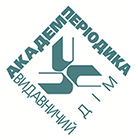APPLICATION OF THE “SMART-CITY” CONCEPT TO THE SOLUTION OF THE PROBLEMS OF RECONSTRUCTION AND DEVELOPMENT OF THE SPHERES OF CITY LIFE IN THE POST-CONFLICT TERRITORIES OF UKRAINE
Section "Economics": Economic and Legal Problems of City Development
Abstract
The issues of restoration and development of living conditions in post-conflict territories through the application of the concept of “SMART-city” are highlighted. The effectiveness of the SMART approach to local governance and the promotion of dynamic urban development has been proven. To determine the feasibility of applying the development of the concept of “SMART-city” to the tasks of restoration and development of Donetsk and Luhansk regions, the problematic issues and conditions in which their life processes take place are highlighted. A schematic representation of the logical interrelationships of the structural elements of the concept of Smart city of directions of restoration, development of spheres of life of cities in post-conflict territories is presented. It was determined that the concept of “SMART-city” is based on the interaction of 6 basic structural elements: smart economy, mobile access, smart environment, smart housing, progressive people, modern management, which fully ensures a guaranteed solution to the problems of restoration and development of the spheres of life of cities on post-conflict territories. It has been determined that the processes of implementation and development of the “SMART-city” concept are only gaining momentum around the world, therefore, modern strategic documents of territorial and national development should be revised in terms of integration and correlation with the principles of “SMART-cities” development. Some available mechanisms for implementing the Smart city concept are given. It is argued that the orientation of city management towards the concept of “SMART-city” will allow changing the status of territories from post-conflict and subsidized to “smart” without going through intermediate stages of recovery and development, which, on the one hand, requires much more funding, on the other, minimizes the time spent on recovery and will accelerate the receipt of future income, expand development prospects.
REFERENCES
- Viina na Donbasi: realii i perspektyvy vrehuliuvannia. Proekt “Konflikt na Donbasi: suchasni realii i perspektyvy vrehuliuvannia”. Kyiv: Tsentr Razumkova, 2019. 144 p. URL: http://razumkov.org.ua/uploads/article/2019_Donbas.pdf [in Ukrainian].
- Chourabi H., Pardo Th.A., Gil-Garcia J.R., Mellouli S., Scholl H. J., Nam T., Walker Sh. Smart cities and service integration initiatives in North American cities: A status report. Proceedings of the 13th Annual International Conference on Digital Government Research, 2012. P. 289-290. URL: https://dl.acm.org/citation.cfm?id=2307789
- Giffender R. Smart cities and energy efficiency in Europe. Vienna: Centre of Regional Science Vienna UT, 2017. URL: http://www.fundaciongasnaturalfenosa.org/wp-content/uploads/2017/09/3-Rudolf-Giffinger-SmartCities_EE_RGiffinger.pdf
- Homeier I. Smart Sustainable City Wien Initiative, City of Vienna, May 2013. URL: http://www.impacts.org/euroconference/vienna2013/presentations/Vienna%20impacts%20smart%20city.pdf
- Kitchin R., Lauriault T.P., McArdle G. Knowing and governing cities through urban indicators, city benchmarking and real-time dashboards. Regional Studies, Regional Science. 2015. Vol. 2. Iss. 1. P. 6-28. https://doi.org/10.1080/21681376.2014.983149
- Kramers A., Hojer M., Lovehagen N., Wangel J. Smart Sustainable Cities-Exploring ICT Solutions for reduced energy use in cities. Environmental Modelling and Software. 2014. Iss. 56. P. 52-62. https://doi.org/10.1016/j.envsoft.2013.12.019
- Schaffers H., Komninos N., Pallot Aguas M. et al. Smart cities as innovation ecosystems sustained by the future internet, 2012. 65 p. URL: https://hal.inria.fr/file/index/docid/769635/filename/FIREBALL-White-PaperFinal2.pdf
- Akageev. M.K. Koncepcija umnyh gorodov: jenergojeffektivnye tehnologii i reshenija dlja ustojchivogo razvitija. URL: http://www.energosovet.ru/stat850.html [in Russian].
- Zhukovych I.A. Smart-misto yak novyi obiekt statystychnykh doslidzhen: vyznachennia termina. Statystyka Ukrainy. 2015. No. 1. P. 18-22 [in Ukrainian].
- Korepanov O.S. Metodolohichni zasady statystychnoho zabezpechennia upravlinnia rozvytkom “rozumnykh” stalykh mist v Ukraini: monohrafiia. Kyiv: DP “Inform.-analit. ahentstvo”, 2018. 354 p. [in Ukrainian].
- Mizhnarodnyi dosvid finansuvannia staloho rozvytku hromad (na prykladi formuvannia merezhevoi infrastruktury): analit. dopovid. Za zah. red. D.I. Oliinyk. K.: NISD, 2017. 54 p. [in Ukrainian].
- World Urbanization Prospects. The 2014 Revision. Highlights. United Nations. URL: https://esa.un.org/unpd/wup/publications/files/wup2014-highlights.Pdf
- Krashchi zarubizhni praktyky rozvytku rozumnykh mist ta mozhlyvosti yikh implementatsii v Ukraini. 46 p. URL: https://knute.edu.ua/file/NjY4NQ==/0f0b6dc03ed47c5ea602ec1803739be7.pdf [in Ukrainian].
- Smart Cities Index 2019. EasyPark Group. URL: https://www.easyparkgroup.com/smart-cities-index/
- Kyiv – rozumne misto? Chy spravdi tak? 112.ua. 16.01.2020. URL: https://ua.112.ua/statji/kyiv--rozumne-misto-chy-spravdi-tse-tak-522060.html [in Ukrainian].
- Stratehiia rozvytku Donetskoi oblasti do 2027 roku, zatverdzhena Rozporiadzhenniam holovy oblderzhadministratsii, kerivnyka oblasnoi viiskovotsyvilnoi administratsii vid 17.02.2020 No. 147/5-20. URL: https://www.minregion.gov.ua/wp-content/uploads/2020/04/doneczka-strategiya-rozvytku-doneczkoyi-oblasti-na-period-do-2027-roku.pdf [in Ukrainian].
Keywords
SMART-city, concept, post-conflict territories, livelihoods, reasonable management, development
Downloads
References
2. Chourabi H., Pardo Th.A., Gil-Garcia J.R., Mellouli S., Scholl H. J., Nam T., Walker Sh. Smart cities and service integration initiatives in North American cities: A status report. Proceedings of the 13th Annual International Conference on Digital Government Research, 2012. P. 289–290. URL: https://dl.acm.org/citation.cfm?id=2307789 (last accessed: 25.07.2020).
3. Giffender R. Smart cities and energy efficiency in Europe. Vienna: Centre of Regional Science Vienna UT, 2017. URL: http://www.fundaciongasnaturalfenosa.org/wp-content/uploads/2017/09/3-Rudolf-Giffinger-SmartCities_EE_RGiffinger.pdf (last accessed: 25.07.2020).
4. Homeier I. Smart Sustainable City Wien Initiative, City of Vienna, May 2013. URL: http://www.impacts.org/euroconference/vienna2013/presentations/Vienna%20impacts%20smart%20city.pdf (last accessed: 25.07.2020).
5. Kitchin R., Lauriault T.P., McArdle G. Knowing and governing cities through urban indicators, city benchmarking and real-time dashboards. Regional Studies, Regional Science. 2015. Vol. 2. Iss. 1. P. 6–28. https://doi.org/10.1080/21681376.2014.983149
6. Kramers A., Hojer M., Lovehagen N., Wangel J. Smart Sustainable Cities-Exploring ICT Solutions for reduced energy use in cities. Environmental Modelling and Software. 2014. Iss. 56. P. 52–62. https://doi.org/10.1016/j.envsoft.2013.12.019
7. Schaffers H., Komninos N., Pallot Aguas M. et al. Smart cities as innovation ecosystems sustained by the future internet, 2012. 65 p. URL: https://hal.inria.fr/file/index/docid/769635/filename/FIREBALL-White-PaperFinal2.pdf (last accessed: 25.07.2020).
8. Акагеев. М.К. Концепция умных городов: энергоэффективные технологии и решения для устойчивого развития. URL: http://www.energosovet.ru/stat850.html (дата обращения: 26.07.2020).
9. Жукович І.А. Smart-місто як новий об’єкт статистичних досліджень: визначення терміна. Статистика України. 2015. № 1. С.18–22.
10. Корепанов О.С. Методологічні засади статистичного забезпечення управління розвитком «розумних» сталих міст в Україні: монографія. Київ: ДП «Інформ.-аналіт. агентство», 2018. 354 с.
11. Міжнародний досвід фінансування сталого розвитку громад (на прикладі формування мережевої інфраструктури): аналіт. доповідь. За заг. ред. Д.І. Олійник. К.: НІСД, 2017. 54 с.
12. World Urbanization Prospects. The 2014 Revision. Highlights. United Nations. URL: https://esa.un.org/unpd/wup/publications/files/wup2014-highlights.Pdf (last accessed: 27.07.2020).
13. Кращі зарубіжні практики розвитку розумних міст та можливості їх імплементації в Україні. 46 с. URL: https://knute.edu.ua/file/NjY4NQ==/0f0b6dc03ed47c5ea602ec1803739be7.pdf (дата звернення: 25.07.2020).
14. Smart Cities Index 2019. EasyPark Group. URL: https://www.easyparkgroup.com/smart-cities-index/ (last accessed: 25.07.2020).
15. Київ – розумне місто? Чи справді так? 112.ua. 16.01.2020. URL: https://ua.112.ua/statji/kyiv--rozumne-misto-chy-spravdi-tse-tak-522060.html (дата звернення: 25.07.2020).
16. Стратегія розвитку Донецької області до 2027 року, затверджена Розпорядженням голови облдержадміністрації, керівника обласної військовоцивільної адміністрації від 17.02.2020 № 147/5-20. URL: https://www.minregion.gov.ua/wp-content/uploads/2020/04/doneczka-strategiya-rozvytku-doneczkoyi-oblasti-na-period-do-2027-roku.pdf (дата звернення: 25.07.2020).
Abstract views: 471 PDF Downloads: 262









